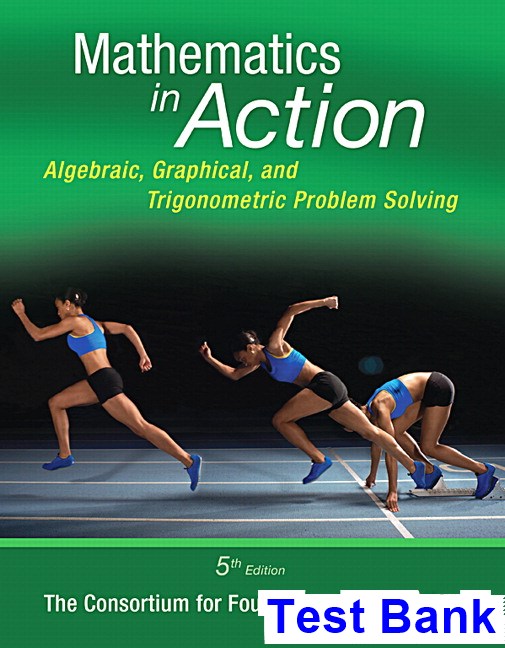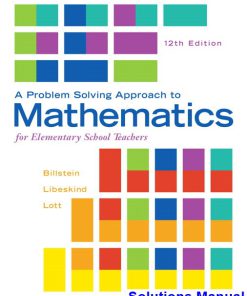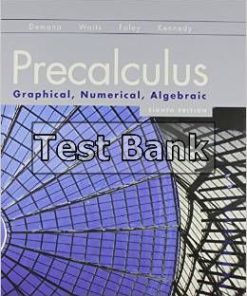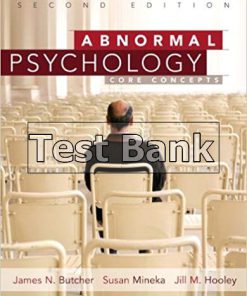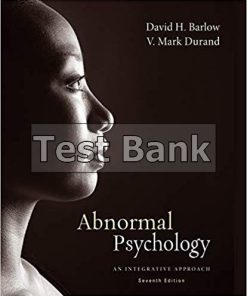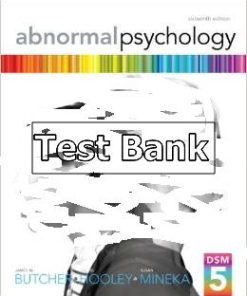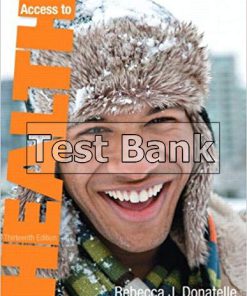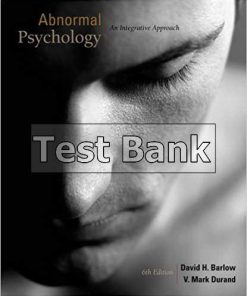Mathematics in Action Algebraic Graphical and Trigonometric Problem Solving 5th Edition Consortium for Foundation Mathematics Test Bank
$26.50$50.00 (-47%)
Mathematics in Action Algebraic Graphical and Trigonometric Problem Solving 5th Edition Consortium for Foundation Mathematics Test Bank.
You may also like
Mathematics in Action Algebraic Graphical and Trigonometric Problem Solving 5th Edition Consortium for Foundation Mathematics Test Bank
Product details:
- ISBN-10 : 0135115612
- ISBN-13 : 978-0135115619
- Author:
The authors of the Mathematics in Action series believe that students learn mathematics best by actually doing the math within a realistic context. If a student is taking this course, why teach them the same content in the same way that they’ve already seen―yet did not retain? Following this principle, the authors provide a series of guided-discovery activities that help students to construct, reflect upon, and apply mathematical concepts, deepening their conceptual understanding as they do so. The active style of learning develops critical-thinking skills and mathematical literacy, while keeping the concepts in the context of real applications.
Table contents:
- Chapter 1. Function Sense
- Cluster 1: Modeling with Functions
- Activity 1.1 Parking Problems: Functions; Function Notation and Terminology
- Activity 1.2 Fill ‘er Up: Defining Functions by a Symbolic Rule (Equation)
- Activity 1.3 Graphically Speaking: Defining Functions: A Summary
- Activity 1.4 Stopping Short: Functions as Mathematical Models
- Activity 1.5 Graphs Tell Stories: Graphs of Functions as Mathematical Models
- What Have I Learned?
- How Can I Practice?
- Cluster 2: Linear Functions
- Activity 1.6 Walking for Fitness: Average Rate of Change
- Activity 1.7 Depreciation: Slope-Intercept Form of an Equation of a Line
- Activity 1.8 A New Camera: Point-Slope Form of an Equation of a Line
- Activity 1.9 Skateboard Heaven: General Form of an Equation of a Line
- Activity 1.10 College Tuition: Modeling Data with Linear Regression Equations
- What Have I Learned?
- How Can I Practice?
- Cluster 3: Systems of Linear Equations, Inequalities, and Absolute Value Functions
- Activity 1.11 Moving Out: Systems of Linear Equations in Two Variables
- Activity 1.12 Fireworks: Solving Systems of Linear Equations using Algebraic Methods
- Activity 1.13 Manufacturing Pewter Oil Lamps: Solving Systems of Linear Equations in Three Variables
- Activity 1.14 Earth Week: Using Matrices to Solve Systems of Linear Equations
- Activity 1.15 How Long Can You Live? Linear Inequalities; Compound Inequalities
- Activity 1.16 Working Overtime: Piecewise Linear Functions
- What Have I Learned?
- How Can I Practice?
- Chapter 1 Summary
- Chapter 1 Gateway Review
- Cluster 1: Modeling with Functions
- Chapter 2. The Algebra of Functions
- Cluster 1: Addition, Subtraction, and Multiplication of Polynomial Functions
- Activity 2.1 Spending and Earning Money: Polynomial Functions
- Activity 2.2 The Dormitory Parking Lot: Multiplication of Polynomials; Multiplicative Properties of Exponents
- Activity 2.3 Stargazing: Scientific Notation; Additional Properties and Definitions of Exponents
- Activity 2.4 The Cube of a Square: Rational Exponents and nth Roots
- What Have I Learned?
- How Can I Practice?
- Cluster 2: Composition and Inverses of Functions
- Activity 2.5 Inflated Balloons: Composite Functions
- Activity 2.6 Finding a Bargain: Problem Solving and Using Composite Functions
- Activity 2.7 Study Time: Inverse Functions
- Activity 2.8 Temperature Conversions: Equations and Graphs of Inverse Functions
- What Have I Learned?
- How Can I Practice?
- Chapter 2 Summary
- Chapter 2 Gateway Review
- Cluster 1: Addition, Subtraction, and Multiplication of Polynomial Functions
- Chapter 3. Exponential and Logarithmic Functions
- Cluster 1: Exponential Functions
- Activity 3.1 Prince George and Dracula: Increasing Exponential Functions
- Activity 3.2 Half-Life of Drugs or Medication: Decreasing Exponential Functions
- Activity 3.3 Spotify: More Growth and Decay Factors
- Activity 3.4 Population Growth: Growth and Decay Rates; More Graphing
- Activity 3.5 Time is Money: Compound Interest and Continuous Compounding
- Activity 3.6 Continuous Growth and Decay: Problem Solving with Continuous Growth and Decay Models
- Activity 3.7 Ebola: Modeling Data with Exponential Regression Equations
- What Have I Learned?
- How Can I Practice?
- Cluster 2: Logarithmic Functions
- Activity 3.8 The Diameter of Spheres: Logarithmic and Exponential Forms
- Activity 3.9 Walking Speed of Pedestrians: Logarithmic Functions
- Activity 3.10 Walking Speed of Pedestrians, continued: Modeling Data with Logarithmic Regression Equations
- Activity 3.11 The Elastic Ball: Properties of Logarithms
- Activity 3.12 Changing Demographics: Solving Exponential Equations
- What Have I Learned?
- How Can I Practice?
- Chapter 3 Summary
- Chapter 3 Gateway Review
- Cluster 1: Exponential Functions
- Chapter 4. Quadratic and Higher-Order Polynomial Functions
- Cluster 1: Introduction to Quadratic Functions
- Activity 4.1 Baseball and the Willis Tower: Equations Defining Quadratic Functions
- Activity 4.2 The Shot Put: Properties of Graphs of Quadratic Functions
- Activity 4.3 Spotify: Solving Quadratic Equations Numerically and Graphically
- Activity 4.4 Sir Isaac Newton: Solving Quadratic Equations by Factoring
- Activity 4.5 Drones: Solving Quadratic Equations Using the Quadratic Formula
- Activity 4.6 Heat Index: Modeling Data with Quadratic Regression Equations
- Activity 4.7 Complex Numbers
- What Have I Learned?
- How Can I Practice?
- Cluster 2: Curve Fitting and Higher-Order Polynomial Functions
- Activity 4.8 The Power of Power Functions: Direct Variation Functions and Their Graphs
- Activity 4.9 Volume of a Storage Tank: Polynomial Functions and Their Graphs
- Activity 4.10 Federal Prison Population: Modeling Data with Polynomial Regression Equations
- What Have I Learned?
- How Can I Practice?
- Chapter 4 Summary
- Chapter 4 Gateway Review
- Cluster 1: Introduction to Quadratic Functions
- Chapter 5. Rational and Radical Functions
- Cluster 1: Rational Functions
- Activity 5.1 Speed Limits: Properties and Graphs of Functions Defined by y = k/x, k≠0
- Activity 5.2 Loudness of a Sound: Inverse Variation Functions
- Activity 5.3 Percent Markup: Rational Functions and Their Graphs
- Activity 5.4 Blood-Alcohol Levels: Solving Rational Equations
- Activity 5.5 Traffic Flow: Solving Rational Equations Using Algebraic Methods
- Activity 5.6 Electrical Circuits: Operations of Rational Expressions
- What Have I Learned?
- How Can I Practice?
- Cluster 2: Radical Functions
- Activity 5.7 Skydiving: Radical Functions and Their Graphs
- Activity 5.8 Falling Objects: Solving Equations Involving a Radical Expression
- Activity 5.9 Propane Tank: More Radical Functions and Their Graphs
- What Have I Learned?
- How Can I Practice?
- Chapter 5 Summary
- Chapter 5 Gateway Review
- Cluster 1: Rational Functions
- Chapter 6. Introduction to Trigonometric Functions
- Cluster 1: Introducing the Sine, Cosine, and Tangent Functions
- Activity 6.1 The Leaning Tower of Pisa: Sine, Cosine, and Tangent of an Angle in a Right Triangle
- Activity 6.2 A Gasoline Problem: Cofunctions of Complementary Angles
- Activity 6.3 The Sidewalks of New York: Inverse Sine, Cosine, and Tangent Functions
- Activity 6.4 Solving a Murder: Trigonometric Problem-Solving Strategy
- Project Activity 6.5 How Stable is that Tower: Problem Solving Using Right Triangle Trigonometry
- What Have I Learned?
- How Can I Practice?
- Cluster 2: Why Are the Trigonometric Functions Called Circular Functions?
- Activity 6.6 Learn Trig or Crash! Graphs of Sine and Cosine Functions
- Activity 6.7 It Won’t Hertz: Radians, Frequency, and Periodic Behavior
- Activity 6.8 Get in Shape: Amplitude and Period of the Sine and Cosine Functions
- Activity 6.9 The Carousel: Horizontal Shifts of the Graphs of the Sine and Cosine Functions
- Activity 6.10 Texas Temperatures: Modeling Data with a Sine Regression Equation
- What Have I Learned?
- How Can I Practice?
- Chapter 6 Summary
- Chapter 6 Gateway Review
- Cluster 1: Introducing the Sine, Cosine, and Tangent Functions
Appendices
- Concept Review
- Trigonometry
- Getting Started with the TI-84 Plus Family of Calculators
- Conics (Online in MyLab Math only)
People also search:
Mathematics in Action Algebraic Graphical and Trigonometric Problem Solving 5th Edition Consortium for Foundation Mathematics
Mathematics in Action Algebraic Graphical and Trigonometric Problem Solving 5th Edition Consortium for Foundation Mathematics edition
Mathematics in Action Algebraic Graphical and Trigonometric Problem Solving 5th Edition Consortium for Foundation Mathematics pdf
Mathematics in Action Algebraic Graphical and Trigonometric Problem Solving 5th Edition Consortium for Foundation Mathematics pdf free
Mathematics in Action Algebraic Graphical and Trigonometric Problem Solving 5th Edition Consortium for Foundation Mathematics download scribd

